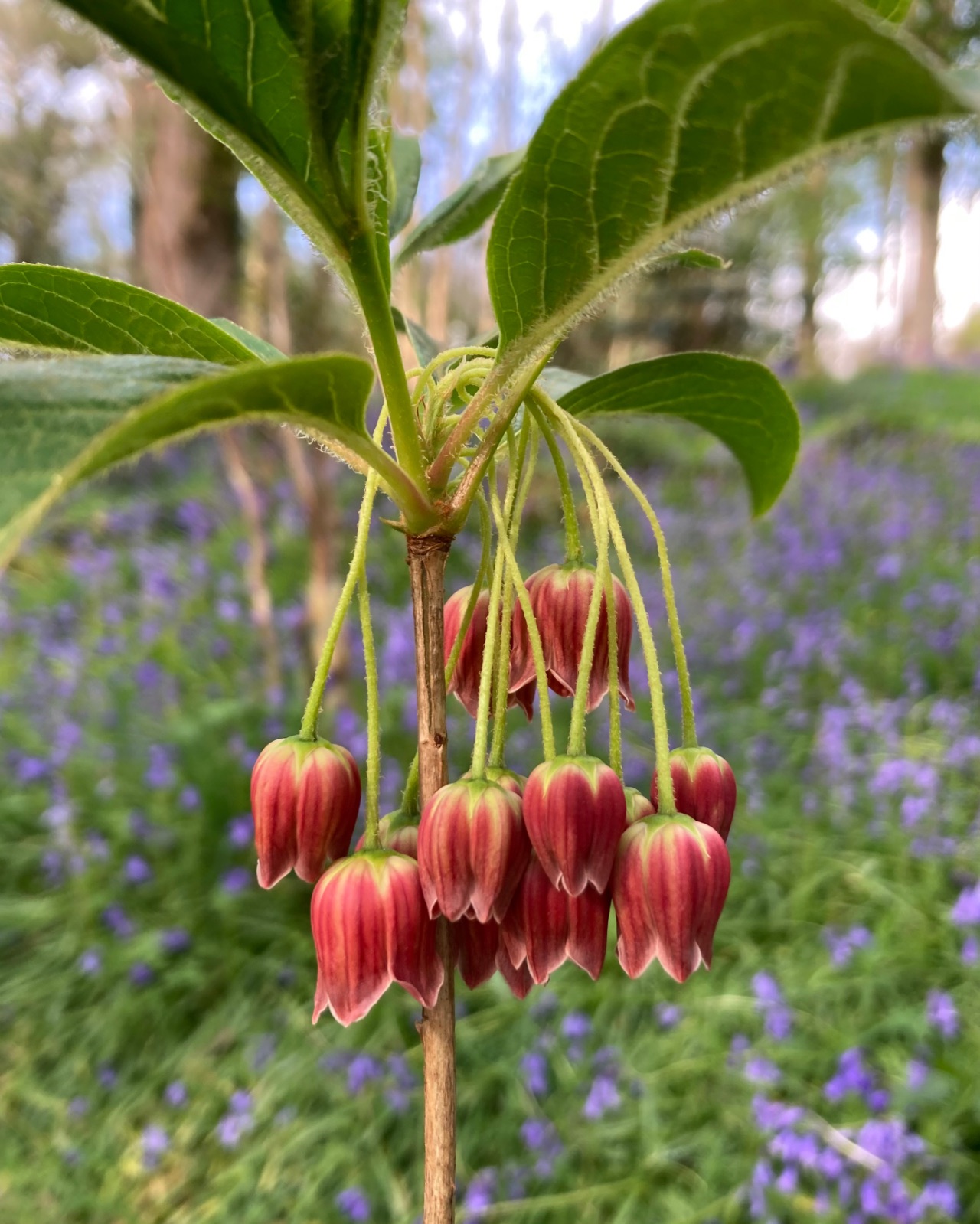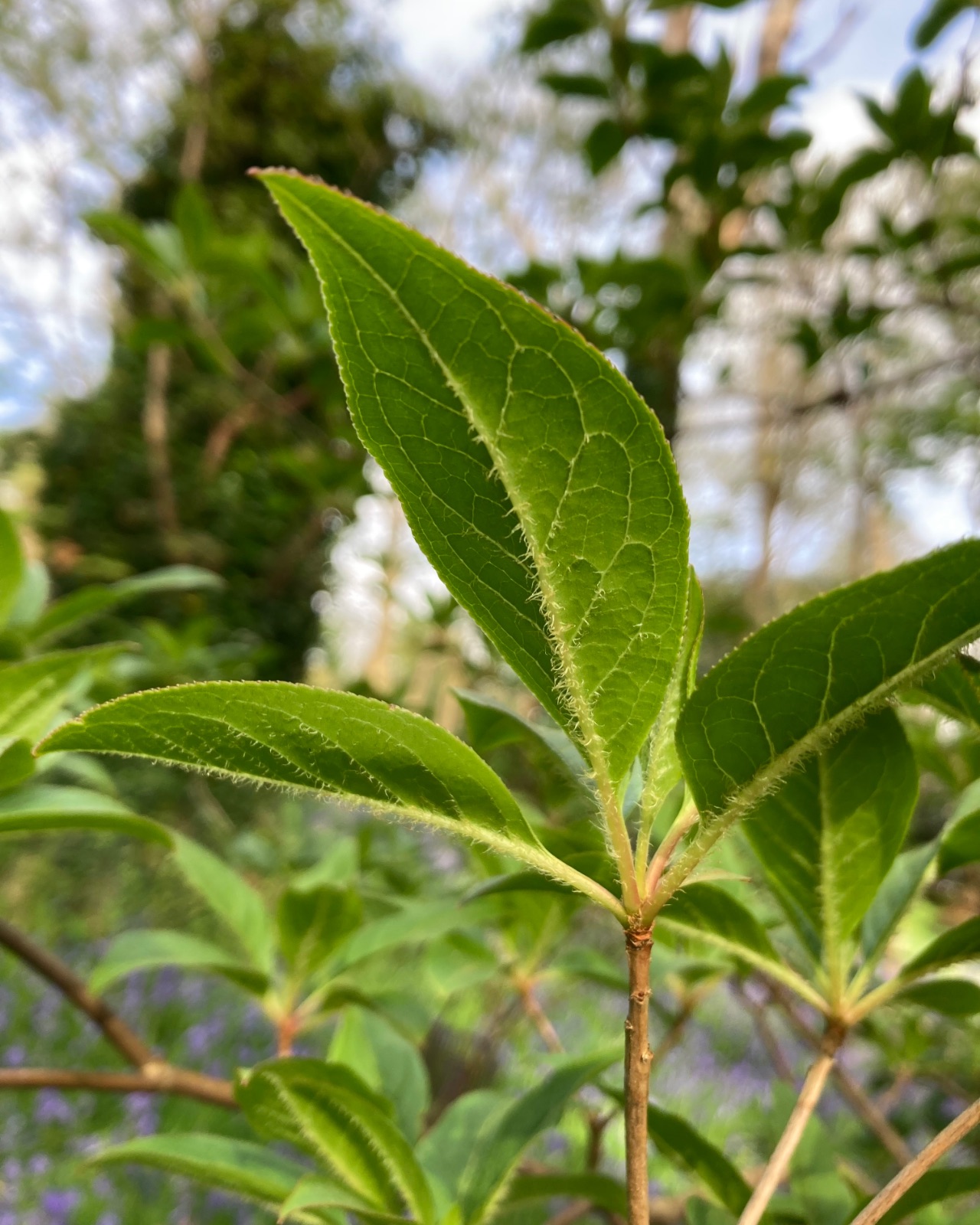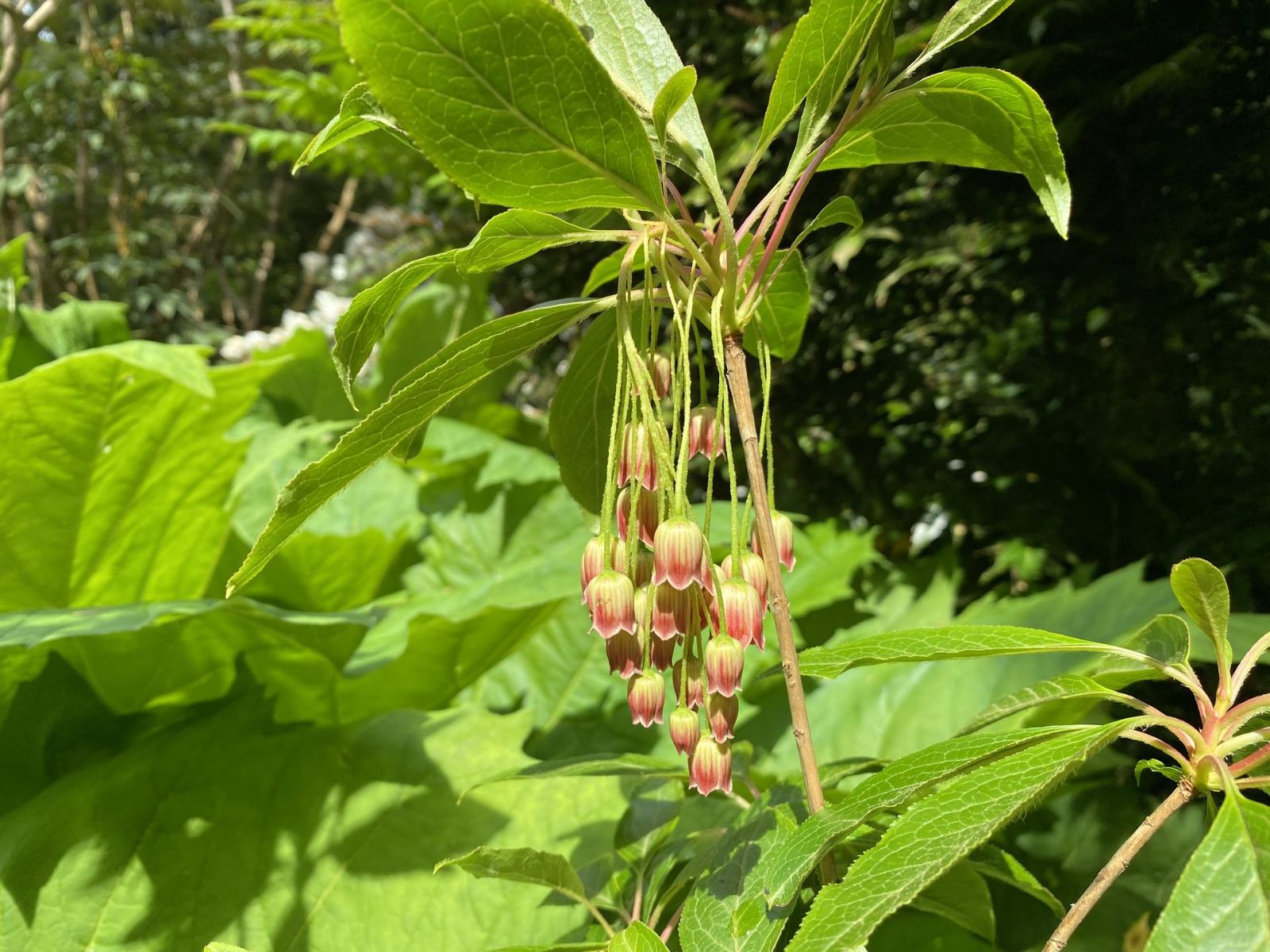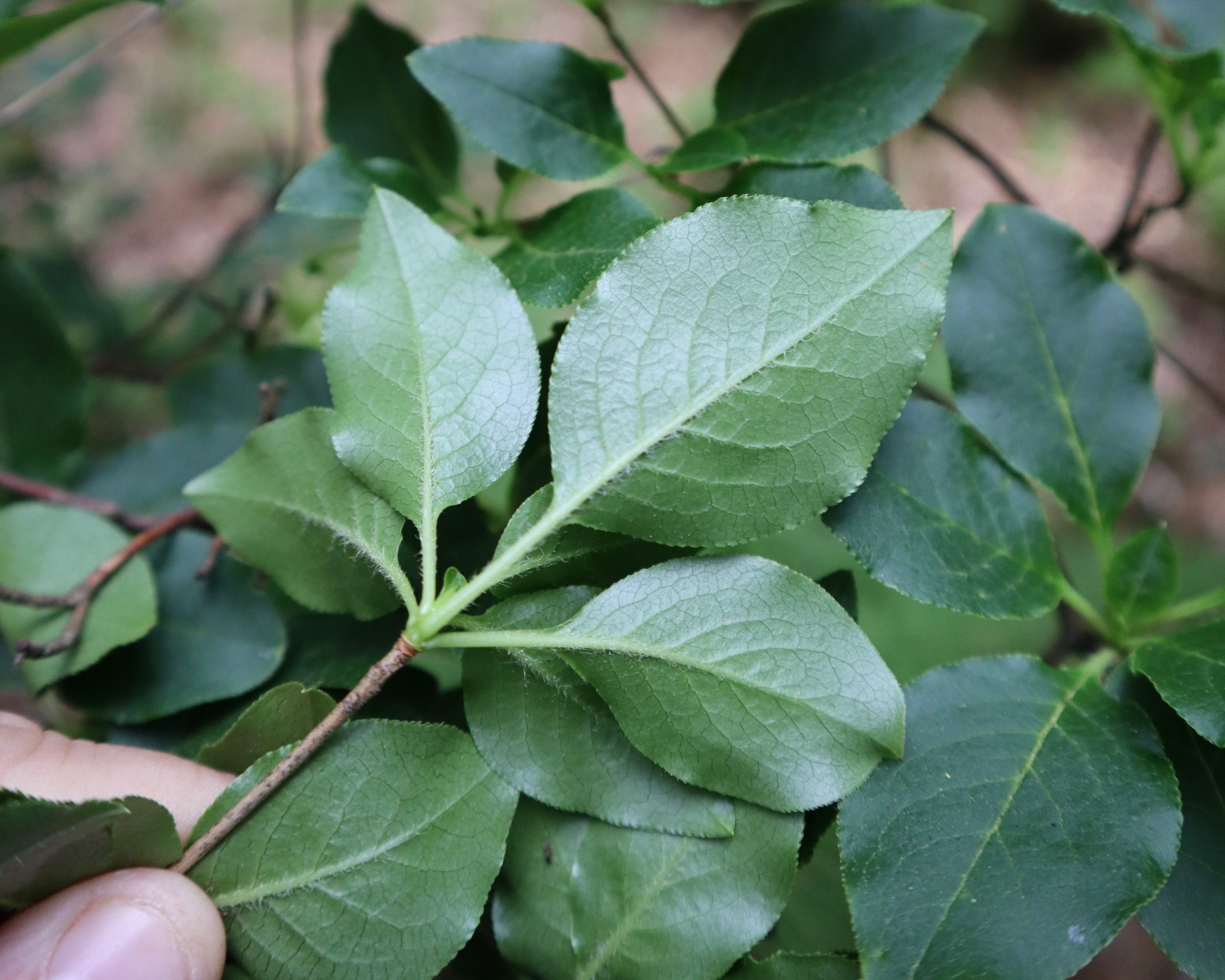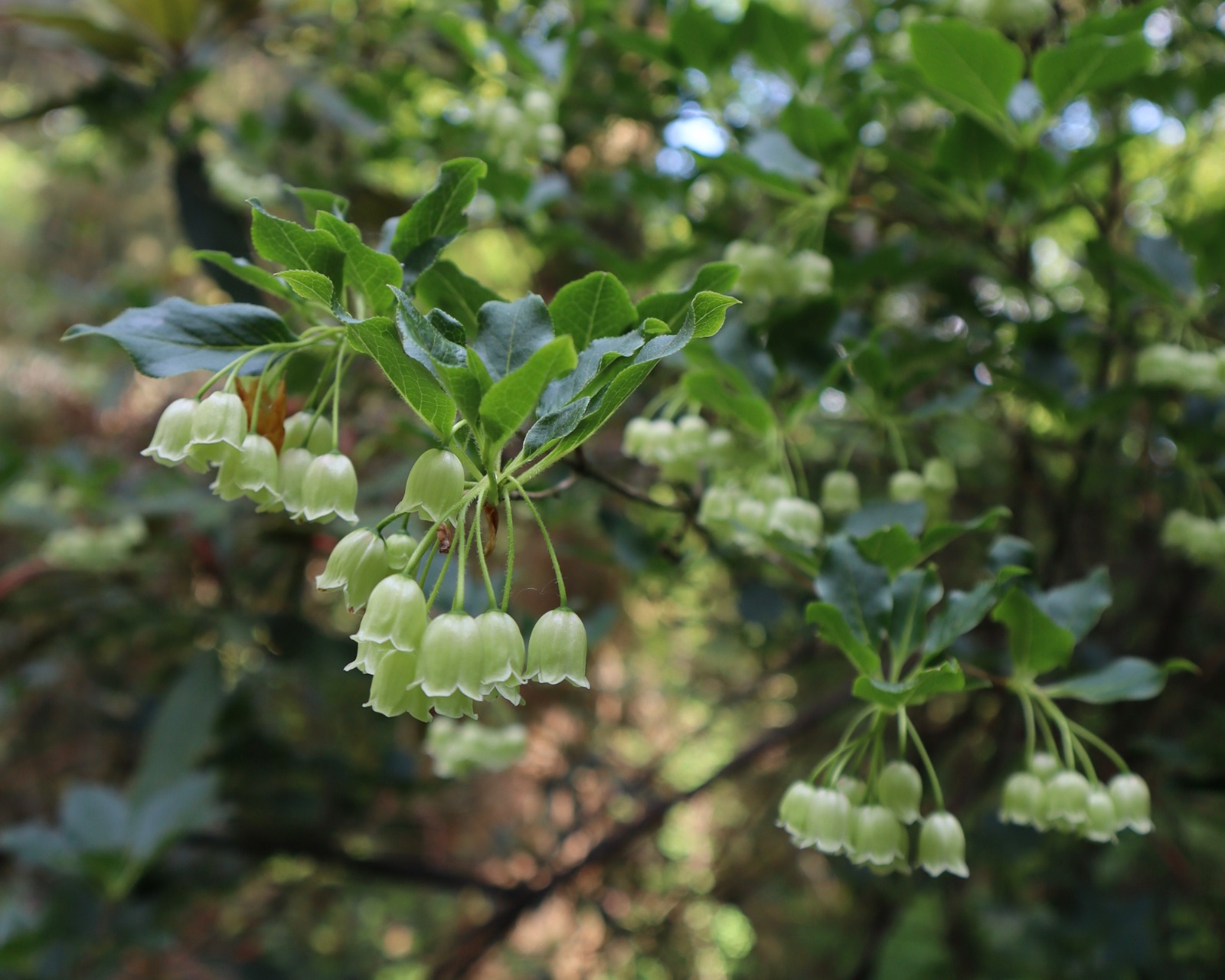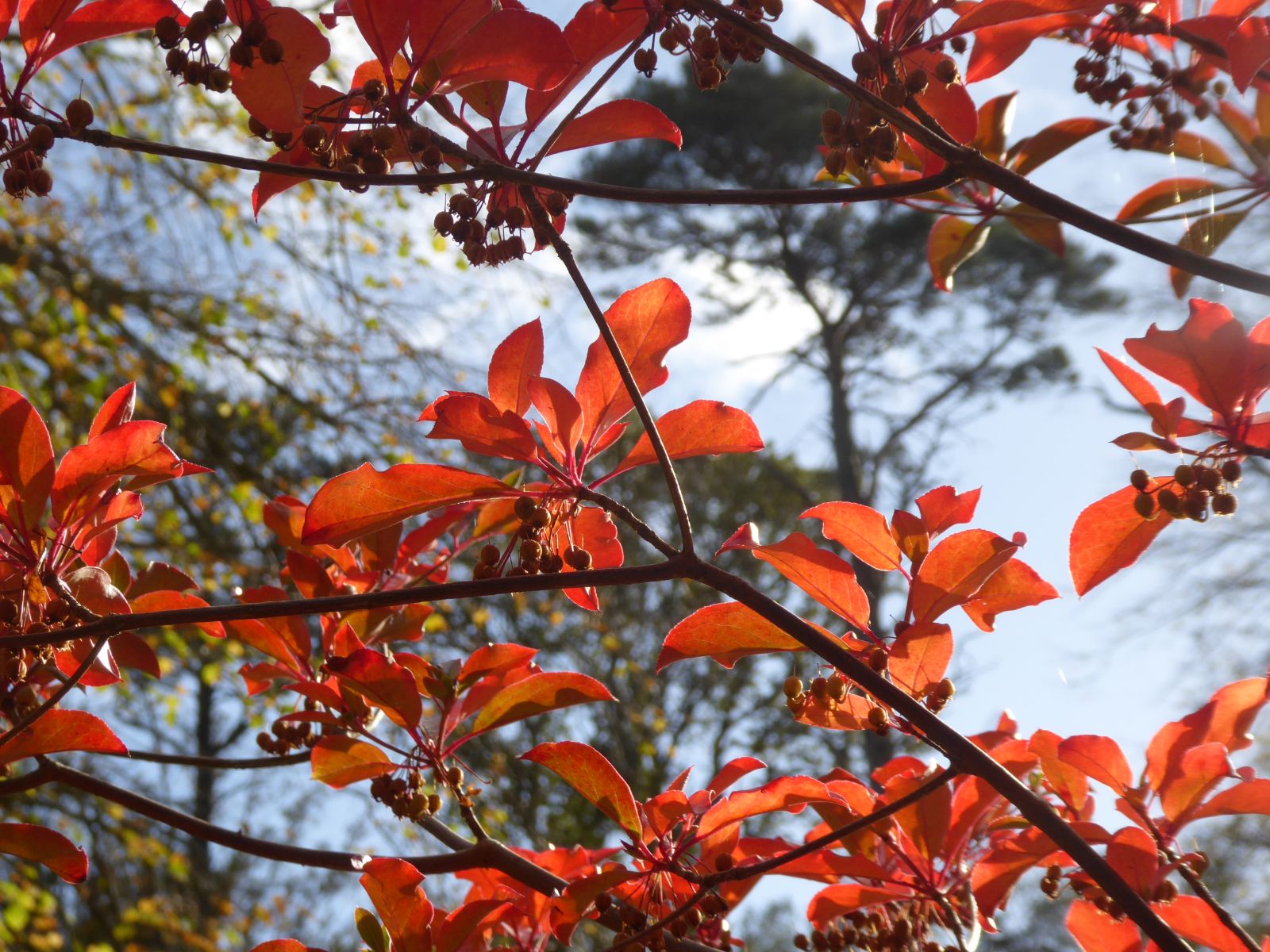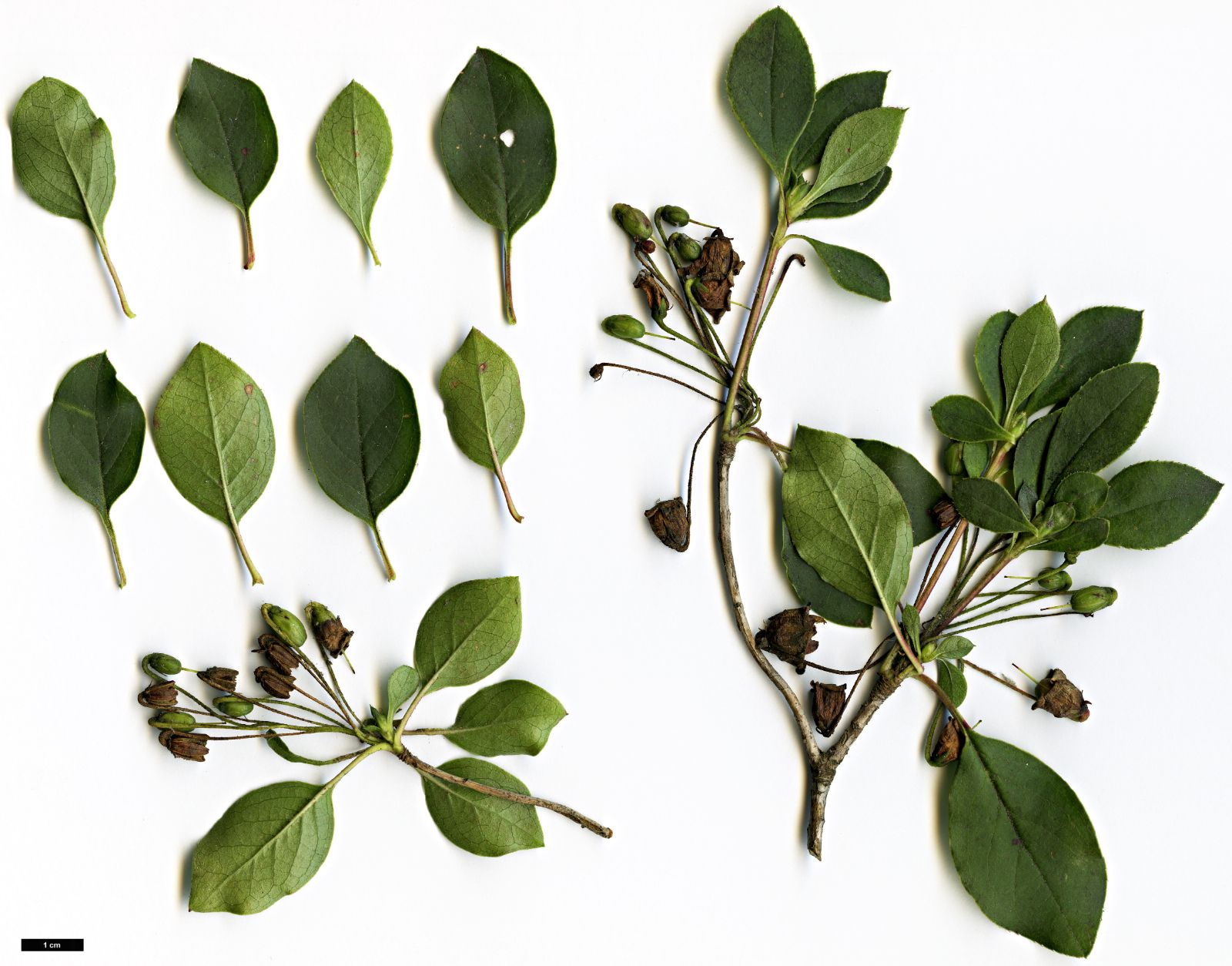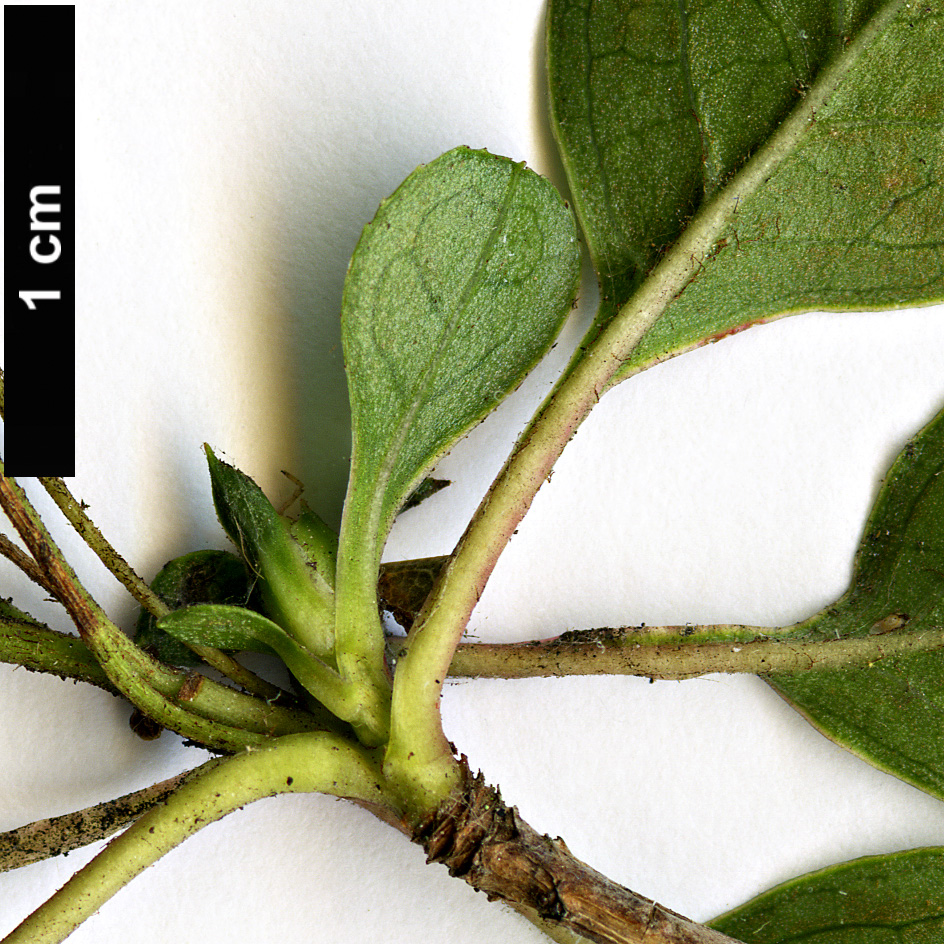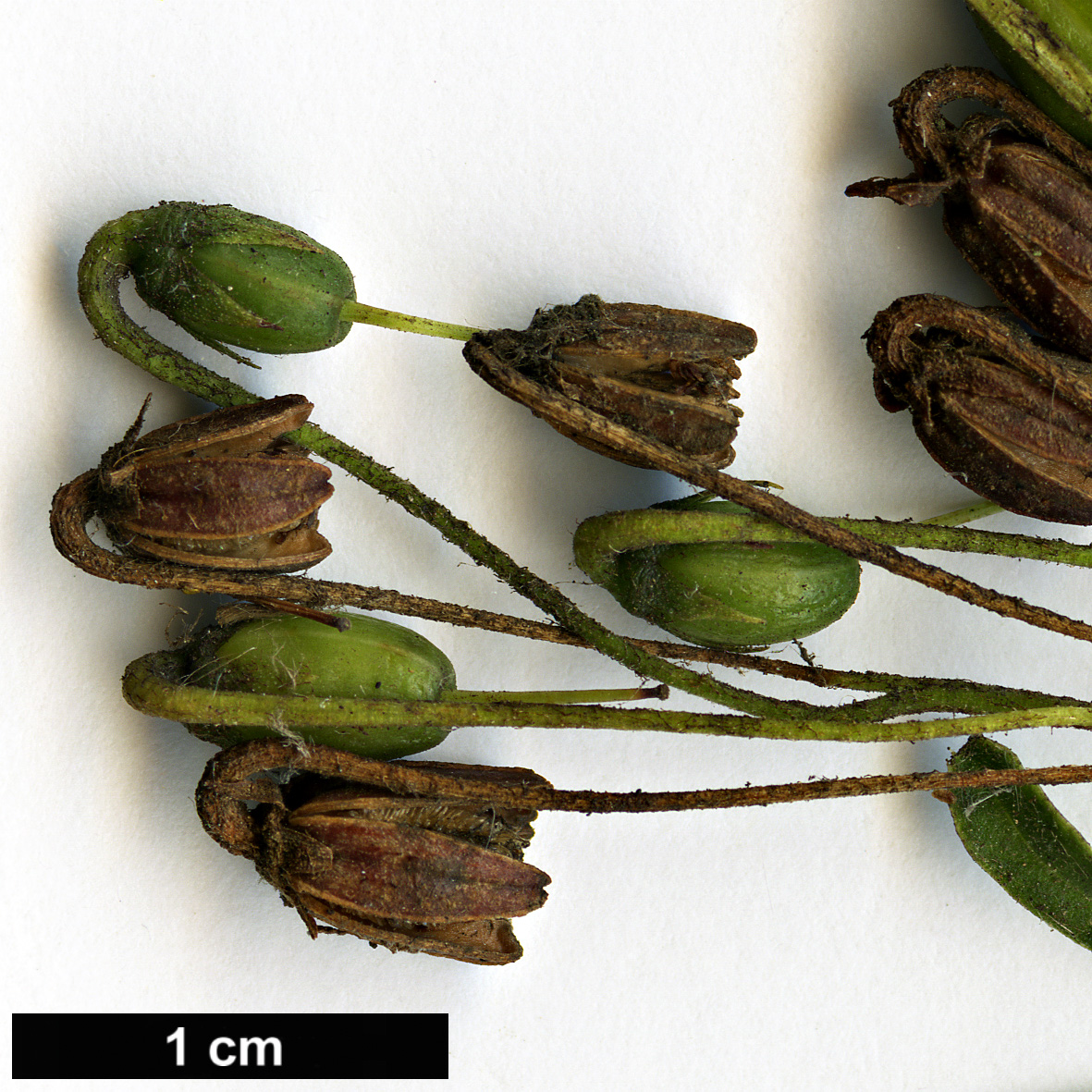Enkianthus deflexus
Sponsor
Kindly sponsored by
Alasdair and Panny Laing
Credits
Tom Clark (2023)
Recommended citation
Clark, T. (2023), 'Enkianthus deflexus' from the website Trees and Shrubs Online (treesandshrubsonline.
Genus
- Enkianthus
- Section Enkiantella
Common Names
- Bent Enkianthus
- mao ye diao zhong hua
Synonyms
- Rhodora deflexa Griff.
- Enkianthus himalaicus Hook.f. & Thomson
- Enkianthus indicus Debta & H.J.Chowdhery
- Enkianthus sulcatus Craib
Shrub or tree, deciduous, 1.5–5 m tall. Twigs subglabrous. Leaf petiole 0.5–1.5 cm, pubescent, hispidulous, or glabrous; leaf blade elliptic, obovate-elliptic, or oblong-elliptic, 3–7 × 1.5–3 cm, thinly papery, abaxially hispidulous on veins or glabrescent, adaxially sparsely shortly setulose and puberulous on veins or glabrous, midvein raised abaxially, adaxially slightly impressed, secondary and fine veins slender and inconspicuous, base cuneate to broadly cuneate, margin serrulate, apex acute. Inflorescence corymbose-racemose; rachis to 5–7 cm, many flowered, densely pubescent or scattered glandular pubescent. Pedicel flattened, terete, 1.5–3 cm, slender, densely pubescent, with glandular hairs or not. Calyx ciliolate; lobes ovate-triangular, 2–3 mm. Corolla white, brick red, or pale yellow, broadly campanulate, 0.8–1.5 cm; lobes erect, broadly triangular. Filaments puberulous. Ovary shortly setulose, pubescent, or glabrous; style pubescent to glabrous. Capsule pendulous, 5–7 mm; stalk erect or distinctly recurved, 2.5–3.5 cm. Flowering April–July, fruiting June–July. (Ruizheng & Stevens 2005).
Distribution Bhutan Myanmar China Guizhou, Guangdong, Hubei, Sichuan, Xizang, Yunnan India Darjeeling, Sikkim Nepal
Habitat Pinus or Quercus forests, mixed forests on mountain slopes, disturbed forests, thickets; 1000–3300(–3900) m asl.
USDA Hardiness Zone 6b-7
RHS Hardiness Rating H5
Conservation status Not evaluated (NE)
This shrub or small tree is widely distributed in western China and westward into the Himalayas. It came into western cultivation via plants sent from western China to Messrs Veitch in 1908 through the efforts of Ernest Henry Wilson during his first expedition on behalf of the Arnold Arboretum (1907–1909) (Bean 1981). Wilson states that it is “one of the commonest and beautiful shrubs in western Szech’uan. It is very variable…but the leaves are always more or less pubescent on the under side” (Sargent 1913). This last point is one of the most helpful distinctions when identifying it in the garden to separate it from E. chinensis (R. White pers. comm. 2023).
Wilson is not alone in admiring this species. Recounting details of his travels in Yunnan, Grey-Wilson comments, “There were amongst this medley some fine trees of Enkianthus deflexus, dripping with a myriad of flowers, beautifully formed small bells of pale greenish-yellow with red lines. The largest specimen we saw must have been all of 6 m tall” (Grey-Wilson 1988). Nor was Roy Lancaster immune to the splendid charms of this species: he recalls his autumn encounter with it on Sichuan’s sacred mountain Emei Shan in his magnificent tome, Travels in China – A Plantsman’s Paradise, where he found it growing amongst a wealth of Acer, Sorbus, Malus, Pyrus, Viburnum and Berberis – all packing a punch clad in their autumn regalia. Comparing E. deflexus to these heavy hitters he wrote that the Enkianthus “was the most brilliant of them all, a sheet of flame in the thickets…its sudden appearance and effect on the pathside stopped us in our tracks” (Lancaster 1989). The large, cream-coloured flowers are veined in pink and occur in umbels of 8–20. This species is a close relative of E. chinensis but E. deflexus tends to have larger flowers and leaves that bear rather robust brown curly hairs on the undersurface, especially on the midvein; the undersides of E. chinensis leaves are glabrous or nearly so.
Coming as it does from across a wide geographic range there is considerable variation in terms of hardiness and this is reflected in the seemingly contradictory statements about its adaptability. Graham Stuart Thomas notes that even in warmer British gardens it requires careful siting (Thomas 1992) whereas Michael Dirr suggests hardiness to –18°C (0°F) or colder. The RHS rates it H5, hardy to –10 to –15°C. Bean draws a line between plants of Himalayan origin and those from China, stating that the former are not very hardy and as such are usually wintered indoors, but the Chinese plants introduced for Messrs Veitch by Wilson in 1908 are hardier (Bean 1981). Given where it can successfully be grown in North America and Europe, a realistic assessment of this taxon’s cold hardiness likely falls somewhere between these two extremes. In the UK it can be found in the collections at the Hillier Arboretum, Wisley and Howick; plants of wild origin grow at Gothenburg Botanic Garden; and it is represented at Arboretum Wespelaar in Belgium. It has been reintroduced from both ends of its range: Nepal (Schilling 2490) and western Sichuan (Lancaster 486 and Rushforth 140). In North America, it can be found in several gardens in the Pacific States and British Columbia. The Sonoma Botanical Garden, in particular, has several accessions, all derived from wild-collected seed from Yunnan and Sichuan. In the eastern U.S., Lewis Ginter Botanical Garden in Virginia grows it as does the U.S. National Arboretum in Washington DC. Of the many accessions received at the Anold Arboretum since the time of Wilson’s early introduction, only two plants from from the 1980’s are recorded as being alive but both are in excess of 2 m tall and have certainly experienced severe cold in this zone 6b site near Boston (Arnold Arboretum 2022). Without a doubt, provenance plays a key role in determining how any one genotype fares in adapting to the conditions of any given site. The Hillier Manual mentions that some plants distributed as E. chinensis are, in fact, E. deflexus (Armitage, Edwards & Lancaster 2014).

